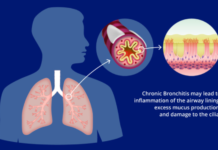Measles is a highly contagious viral infection caused by the measles virus, a paramyxovirus of the genus Morbillivirus. The virus is transmitted primarily through respiratory droplets from coughs and sneezes of infected individuals. It can also spread by direct contact with nasal or throat secretions and, less commonly, by touching surfaces contaminated with these secretions. The measles virus can remain infectious in the air or on surfaces for up to two hours.

Symptoms:
The symptoms of measles typically appear 10-14 days after exposure to the virus and can include:
- High fever, which may reach 104°F (40°C)
- Cough
- Runny nose
- Red, watery eyes (conjunctivitis)
- Koplik’s spots (tiny white spots with bluish-white centers inside the mouth on the inner lining of the cheek)
- Rash, which usually appears 3-5 days after the initial symptoms. It begins as flat red spots on the face at the hairline and spreads downward to the neck, trunk, arms, legs, and feet. Small raised bumps may also appear on top of the flat red spots.
Deaths:
Despite being preventable, measles remains a significant cause of death among young children globally. According to the World Health Organization (WHO), measles caused approximately 140,000 deaths worldwide in 2018, with the majority of deaths occurring in children under five years old. The complications that can lead to death include severe respiratory infections (like pneumonia), encephalitis (a dangerous swelling of the brain), and severe diarrhea with dehydration.
Measles caused approximately 136,000 deaths worldwide, predominantly affecting children under five years old. This marked a 43% increase in deaths compared to 2021, reflecting declining vaccination rates exacerbated by the COVID-19 pandemic .Measles outbreaks were reported in 37 countries in 2022, with the majority occurring in low-income regions with insufficient healthcare infrastructure, such as parts of Africa, the Middle East, and Asia. Countries with significant measles deaths included Angola, Brazil, the Democratic Republic of the Congo, Ethiopia, India, Indonesia, Madagascar, Nigeria, Pakistan, and the Philippines .
Impact:
The impact of measles extends beyond the immediate health effects on individuals. Measles outbreaks can strain healthcare systems, especially in countries with limited resources. High vaccination coverage is crucial for preventing outbreaks, as measles is extremely contagious; one infected person can spread the virus to 90% of non-immune individuals they come into contact with.
Public Health and Economic Impact:
- Healthcare Costs: Treating measles and its complications can be costly. During outbreaks, healthcare systems must allocate significant resources to manage the surge in patients, which can overwhelm medical facilities.
- Economic Burden: The economic impact of measles includes both direct medical costs and indirect costs such as lost productivity due to illness and the care of sick family members.
- Vaccine-Preventable Disease: Measles is preventable through vaccination. Mumps, and Rubella (MMR) vaccine is highly effective, with two doses providing about 97% immunity. However, vaccine coverage must be high (above 95%) to achieve herd immunity and prevent outbreaks .
Societal Impact:
- Disruption to Education: outbreaks can lead to significant disruption in education, as infected children must stay home, and schools may close to prevent further spread.
- Impact on Families: Beyond the health implications, can place a significant emotional and financial burden on families, particularly in low-income settings where access to healthcare may be limited.
Global Efforts:
Global initiatives aim to reduce incidence through vaccination campaigns and public health education. Organizations like WHO and UNICEF work to improve vaccination coverage worldwide, particularly in low- and middle-income countries where measles remains endemic. Despite these efforts, vaccine hesitancy and logistical challenges in vaccine delivery continue to hinder the eradication of measles globally .
In conclusion, remains a serious global health threat despite being preventable through vaccination. Continued efforts to improve vaccine coverage and address barriers to vaccination are essential to reduce the incidence of and its associated morbidity and mortality.






